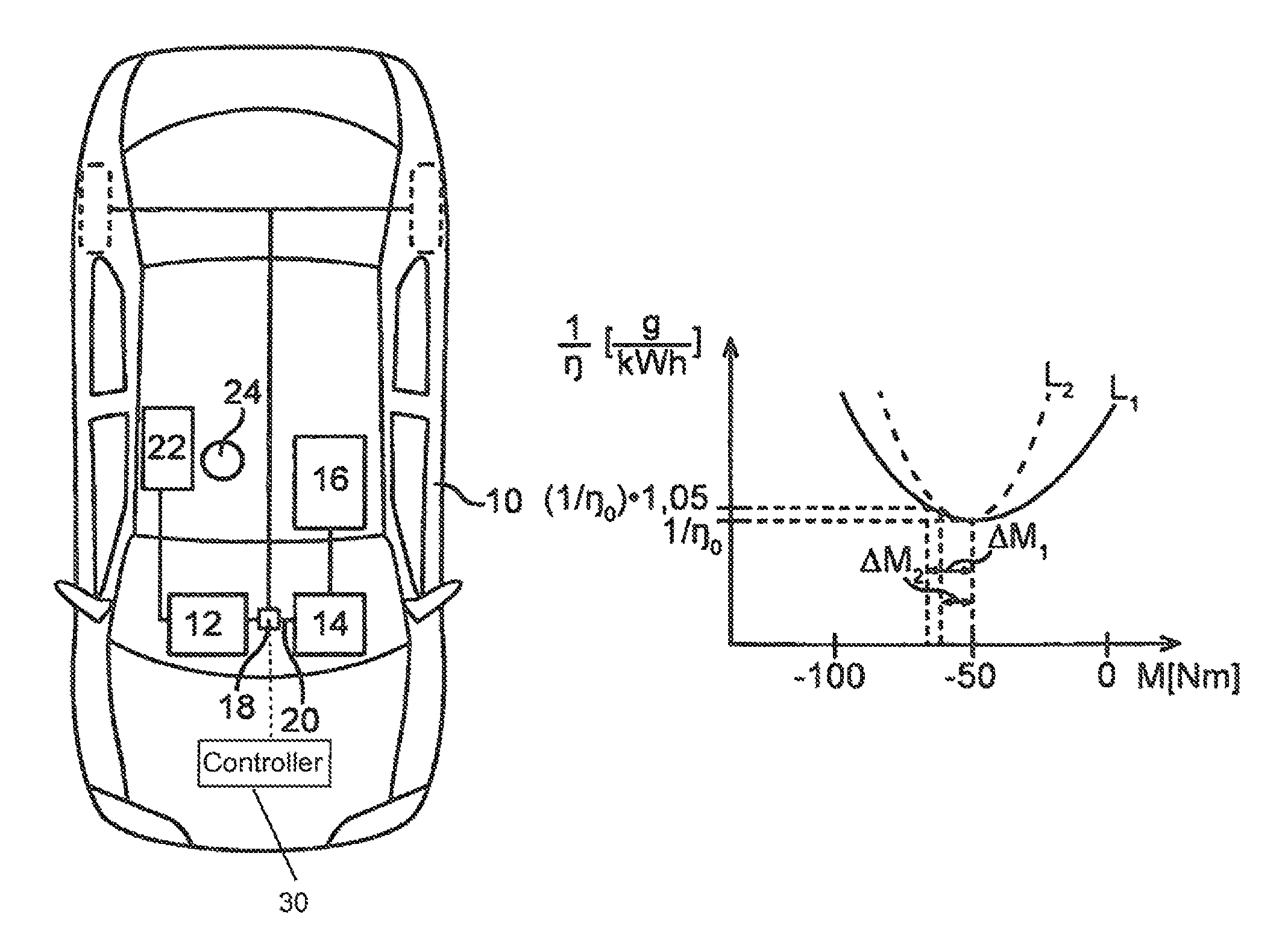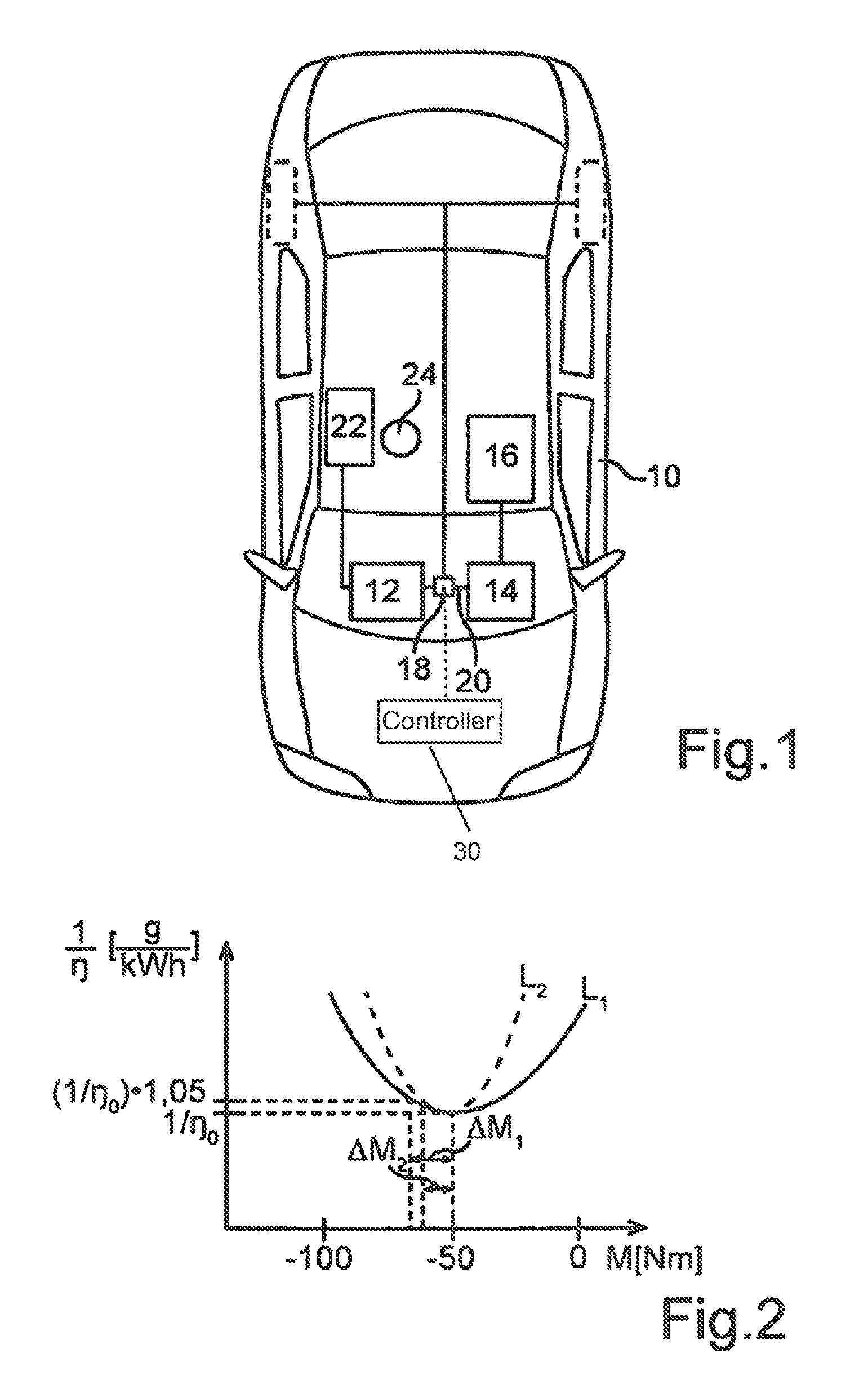Method for operating a vehicle with an internal combustion engine and a generator
a technology of internal combustion engine and generator, which is applied in the direction of vehicle position/course/altitude control, process and machine control, instruments, etc., can solve the problems of affecting the desired function of the hybrid vehicle, consuming a relatively small amount of fuel, etc., and achieves rapid charging
- Summary
- Abstract
- Description
- Claims
- Application Information
AI Technical Summary
Benefits of technology
Problems solved by technology
Method used
Image
Examples
Embodiment Construction
[0019]A motor vehicle designated overall with the reference symbol 10 has an internal combustion engine 12 and an electric drive 14, which can also be operated as a generator. The electric drive 14 is supplied from a battery 16. The battery 16 is charged when the electric drive 14 is operated as a generator. During charging, the so-called load point of the internal combustion engine 12 shifts: The conventional load point is determined by the torque to be applied to the wheels of the motor vehicle. A torque being used to produce electric current is now added to this torque. Thus, a portion of the torque is diverted under control of a controller 30 via a gear unit 18, another portion of the torque is supplied via a shaft 20 to the electric drive 14 which operates as a generator. A ratio of the energy provided in the battery 16 and the amount of required fuel can be determined, wherein the fuel is supplied to the internal combustion engine 12 from a fuel tank 22. This ratio is called t...
PUM
 Login to View More
Login to View More Abstract
Description
Claims
Application Information
 Login to View More
Login to View More - R&D
- Intellectual Property
- Life Sciences
- Materials
- Tech Scout
- Unparalleled Data Quality
- Higher Quality Content
- 60% Fewer Hallucinations
Browse by: Latest US Patents, China's latest patents, Technical Efficacy Thesaurus, Application Domain, Technology Topic, Popular Technical Reports.
© 2025 PatSnap. All rights reserved.Legal|Privacy policy|Modern Slavery Act Transparency Statement|Sitemap|About US| Contact US: help@patsnap.com


